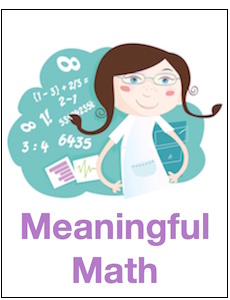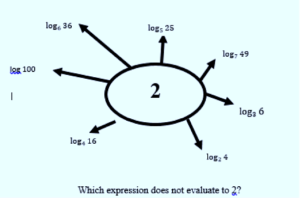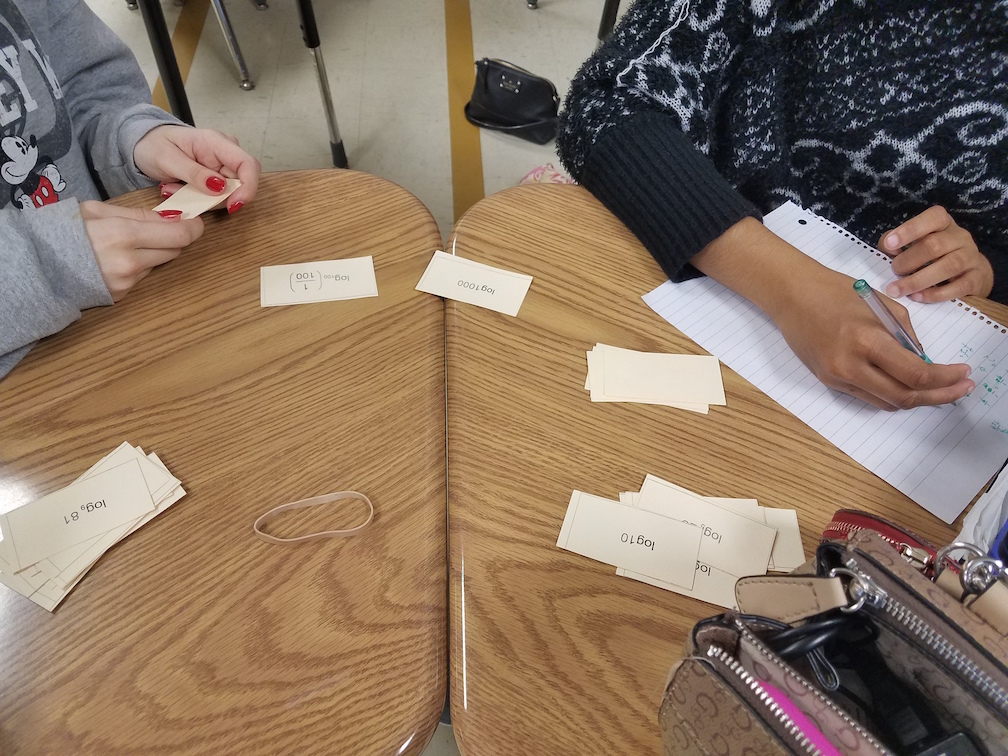2 Math Activities Ease the Spring Break Wait
 Lately, I’ve felt like things have become a little stale in my classroom. The last several weeks have been consumed with standardized testing. The students are tired and ready for a break and I am too! Unfortunately we are still a few weeks away from spring break. I needed to do something to rejuvenate things in the meantime.
Lately, I’ve felt like things have become a little stale in my classroom. The last several weeks have been consumed with standardized testing. The students are tired and ready for a break and I am too! Unfortunately we are still a few weeks away from spring break. I needed to do something to rejuvenate things in the meantime.
I love to peruse Twitter and Pinterest looking for new ideas for lessons. I do it to wind down at the end of the day. I end up saving hundreds of activities that I plan on doing later. When I’m on Pinterest, I pin them under different categories based on subject matter. For Twitter, I use the Pocket app that lets me save them according to whatever I want to tag it.
Unfortunately, I rarely go back and look at all the activities I saved for later. But this year I realized that now would be the perfect time to pick a few of those activities and try them out in my classroom. My hope was that trying out something new would be just the thing to help me get over my slump and energize my weary students a bit.
Read on to learn about activities I tried and the students’ responses. I also share how much prep time was involved and what the payoff was in terms of student learning.
1st Activity: Math Card Wars
Overview
I first saw this activity on Twitter. It came from high school teacher Kate Nowak. She got the idea from Denise Gaskins. See Gaskin’s article “The Game That Is Worth 1000 Worksheets” for lots of variations that will work well with math learning in grades 4-8.
The idea is this: students play a customized version of the card game War (the same one most of us played as kids). The activity requires students to play using a special deck of cards. The cards in Nowak’s deck (there’s a template) have log expressions on them, such as log28. (So, “Log Wars.”) Each player turns over a card, evaluates their expression, and whoever has the larger number takes both cards. When the entire deck has been played through, whoever has the most cards wins.
Prep Required
Everything I needed was on Kate Nowak’s site. I printed off the three-page pdf document (using cardstock) which consisted of 30 cards (I made 15 decks requiring 45 pieces of paper). I got out my trusty paper cutter and cut out the 30 individual cards for each.
Unfortunately, I used the same color paper for all of the decks; I should have used a different color for each deck so that it would be easier to keep them separate. Also, I didn’t really need 15 sets. My biggest class has 30 students, but some of the students wanted to play in groups of three, so 10 sets would have been plenty. I did not laminate them, and they seemed to hold up fine. It took about 15 or 20 minutes to print out the cards and cut them out.
How Did It Go?
I ended up using this activity the day after we took our math benchmark. I wanted something that the students would enjoy that would also help them to review log expressions. This activity was great! The students had no trouble knowing what to do (most students already knew how to play the basic game), and they enjoyed trying to beat each other.
Most students really liked it and played enthusiastically even though they were tired from taking benchmark tests all week. Like with any activity, some students liked it more than others. It was interesting to me that many of the students who don’t usually get very excited about math really seemed to enjoy this game. My students took about 10 to 15 minutes to complete a hand. I’m not sure if that’s typical or not, but I don’t think this activity would last an entire class period.
I regret not doing this activity while I was actually teaching the unit on logs, because it turned out to be a great formative assessment tool. By listening to the students as they discussed their cards it was very easy for me (and my students) to see which expressions they were having trouble with. Oh well, next year!
This activity is very versatile; it can be adapted for many different concepts, ages and grade levels. And you don’t necessarily have to make your own cards! On Denise Gaskin’s website she recommends using a regular deck of cards with the face cards removed. If you teach math you will probably be able to find a variation of War that fits the standards you teach.
The “One Incorrect” Worksheet
This activity came from a middle school blogger that I follow on Twitter, who learned it in a PD session hosted by Sara VanDerWerf. The idea is simple: students will choose the only incorrect expression from among several correct options. So while several expressions will have the same answer, only one will be incorrect.

Prep Required
I really liked this activity for several reasons. First of all, it is very low prep. The author was nice enough to provide a template to download. It took me about 15 minutes to customize it for my lesson on logarithms and a lot of that time was spent fighting with technology (which is something I do often). I had a little trouble getting the expressions to go where I wanted them to. You might immediately think of a better tech solution.
How Did It Go in the Classroom?
During my first class of the day, I had students working on it individually and I walked around the room looking at their responses. Although students were all engaged in trying to find the one incorrect answer, there wasn’t a lot of student conversation.
To increase “math talk” I gave the students a minute or so to look at the sheet individually and pick out what they thought was the one incorrect option. Then they were instructed to discuss their choice with a neighbor and come to an agreement. As they tried to find agreement with their partner, I walked around listening to their conversations and I could hear them debating the merits of the different options. Finally, as a class, the students shared out their thinking and the option they thought was incorrect.
Impact on Student Learning
It helped reinforce some basic ideas about logarithms for my students. The format definitely encouraged productive conversation. Compared to simply giving students a multiple-choice question, there was a lot more time spent debating the merits of each option.
It occurred to me that this would be a great way to review a group of concepts, so I made another one that included logarithms, imaginary numbers, and trig ratios. It worked well to review several concepts at once, which can be difficult to do in a short period. All in all, this activity gave me a pretty big bang for my buck! In fact, now that my students are used to this format, I will probably do at least one for each unit.
Final Thoughts
Both activities worked really well to spark student conversations. The Log Wars game immediately let me and my students know whether they could evaluate simple log expressions and I didn’t have to grade a thing. The “One Incorrect” worksheet also let students assess themselves without my grading a ton of papers.
Beyond the immediate effects on my students, trying out these new activities had a really positive effect on me. I looked forward to each of my classes because I was excited to be trying out something new. Even though it took time to prepare a new activity, it was worth it. I would recommend that anyone who is feeling stuck in a rut search out and try out a few new activities to be re-energized.
As always, please share your own thoughts and ideas in the comments below. I am really thankful for all the teachers who make the effort to blog and tweet about the activities they use in their classroom and are willing to freely share the resources they took the time and effort to create. A special thank you to Kate Nowak, Denise Gaskins, Greta from the blog, “Count it All Joy,” and Sara VanDerWerf for the activities that I tried this month.
I started out the month in a slump. Trying just a few new things lifted my spirits. Now I just need to make it to Spring Break!
Have you ever explored
AFT’s Share My Lesson site for math activities?
Visit the Middle School section here.


































